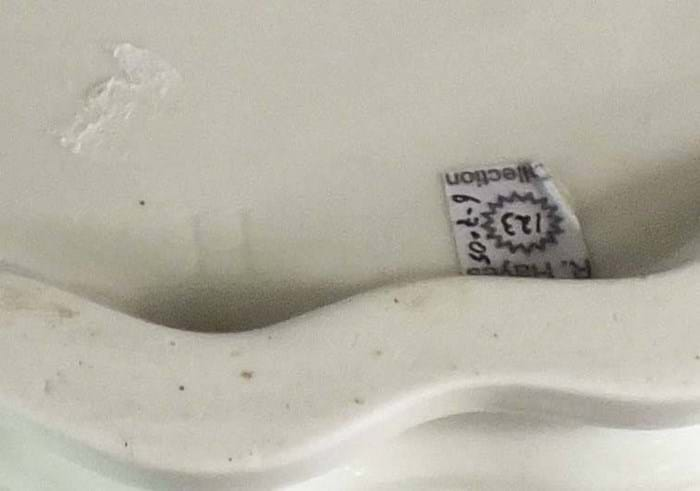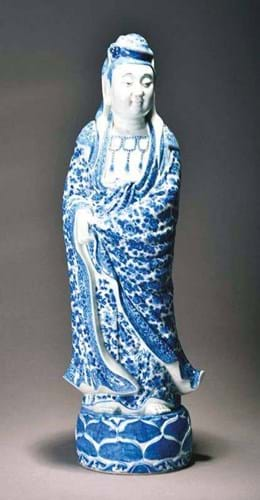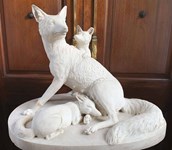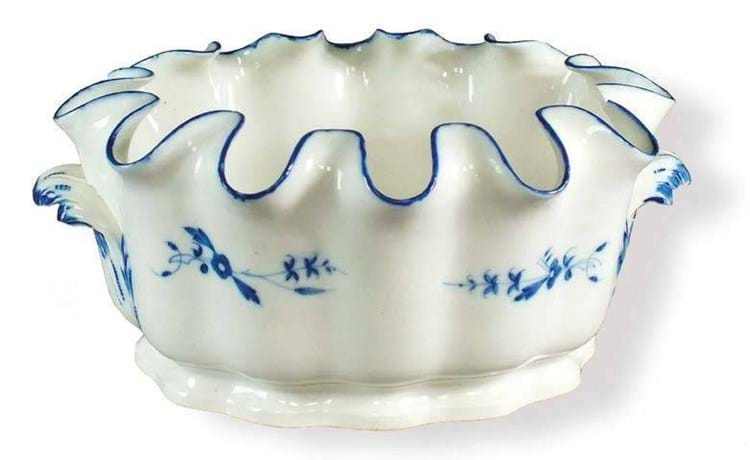
Although very much in the French style, a 12in (30cm) wide monteith or verrière (a wine-glass cooler or rinsing bowl) was made in soft-paste by the Caughley factory in Shropshire.
One of only four known (one is held in the V&A, another in the Shrewsbury Museum and a third in a private collection in Germany), it has both the painted mark S (for the Salopian China Warehouse) and an enigmatic incised H. Geoffrey Godden suggested that the latter denotes the contribution of François Hardenbourg from Strasbourg, who worked at the Sèvres manufactory and at the Caughley factory from 1780-88.
This piece was previously part of the Rev Richard Hayes collection, 170 pieces of which are in Shrewsbury Museum. The original vendor (it was sold at Sotheby’s Olympia in 2005) noted that the monteith was originally one of two sold from a house in Falloden, Northumberland, previously owned by Sir Edward Grey (1862-1933), foreign secretary during the First World War.
Halls probably now sells more Caughley than any other saleroom. This piece joined a roster of strong recent prices when it took £2300 (£1500-2000). Two small 5in (12.5cm) high jardinieres in the same Chantilly Sprigs pattern, c.1785-90, also from the Hayes collection, sold at £650 and £320.
Chinese works
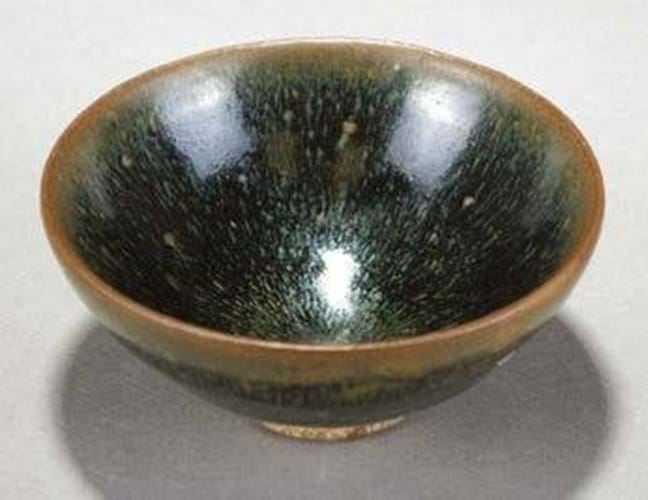
Song period hare’s fur bowl – £13,000 at Halls.
The biggest price in the sale by some distance was bid for a Song (960-1279) period bowl, just under 4in (10cm), decorated with a dark brown glaze with ‘hare’s fur’ ochre speckling.
Specialist Alexander Clement received it from a Shrewsbury vendor who has collected Chinese works of art for many years.
“It was one of several pieces we had consigned from this collector, many of which dated to the Song and Ming dynasties, and were quite diverse in style,” said Clement. “The bowl was one of four from the same period but stood out because of its splendid glaze.”
The technique involved early cooling in the kiln to separate the glaze elements and produce interesting effects. Competition came from online bidders in the UK and mainland China. Starting at £3000 (the estimate was £400-600), it finally reached £13,000 before selling to a buyer via thesaleroom.com.
Other strong performers among the Chinese lots included a large 20in (50cm) figure of Guanyin atop a lotus base decorated with a dense profusion of blue flowers and foliage and a Ge type water pot with a greyish glaze suffused with a fine two-tone wire crackle.
Both estimated at £200-300, the former, certainly 19th century, sold at £8000. The latter, probably Qianlong period in imitation of the Song, took £2600.
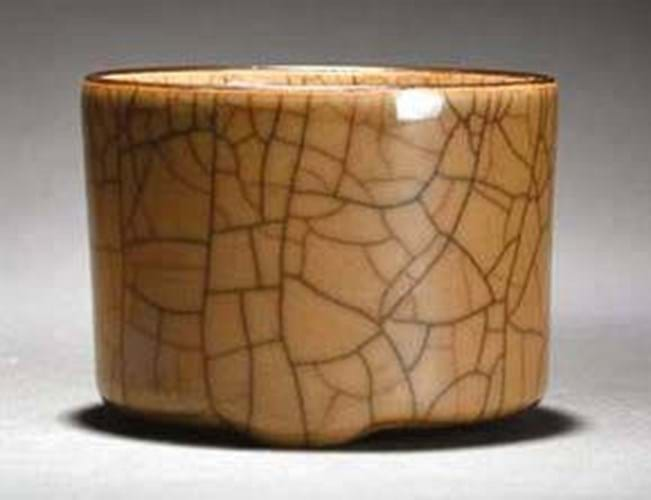
Ge type water pot – £2600 at Halls.


